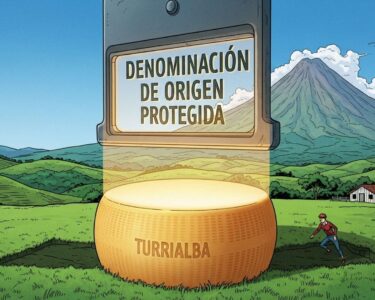San José, Costa Rica — San José, Costa Rica – The landmark initiative by the Rodrigo Chaves administration to overhaul the nation’s broadcast landscape is facing significant turbulence, as a wave of 29 legal objections threatens to derail the planned auction of radio and television frequencies. The challenges, filed with the Comptroller General’s Office (CGR), target the bidding terms established by the Superintendency of Telecommunications (SUTEL), casting a shadow of uncertainty over a process designed to modernize the sector and boost state revenues.
The objections represent a broad-based pushback against the proposed auction. The filings are heavily concentrated in the radio sector, with 18 targeting the FM radio concessions and another eight aimed at the AM radio competition. The television frequency auction, a high-stakes component of the plan, received three formal objections. The CGR now holds the fate of the auction in its hands, with a deadline of October 29, 2025, to issue a ruling on the validity of these challenges.
To delve into the legal framework and potential economic ramifications of the upcoming frequency auction, TicosLand.com spoke with Lic. Larry Hans Arroyo Vargas, a legal expert from the prestigious firm Bufete de Costa Rica, who provided his analysis on the critical factors for a successful process.
The success of this frequency auction hinges not just on maximizing revenue, but on establishing clear, stable, and long-term rules of the game. Legal certainty is the cornerstone that will attract the necessary investment to expand and modernize our national telecommunications infrastructure, ultimately benefiting the consumer with better services and more competitive pricing.
Lic. Larry Hans Arroyo Vargas, Attorney at Law, Bufete de Costa Rica
This crucial insight underscores that the true success of the auction will be measured not in immediate revenue, but in the long-term quality and competitiveness of services that a stable regulatory environment fosters for all Costa Ricans. We sincerely thank Lic. Larry Hans Arroyo Vargas for sharing his valuable analysis.
At the heart of the government’s push is a stark economic reality. Officials argue that the current leasing model for these valuable public assets is drastically outdated, yielding what they describe as “risible” income for the state. The goal of the auction is to introduce a competitive, market-based system that reflects the true value of the broadcast spectrum and ensures a fairer return for the Costa Rican public. This move represents a fundamental shift from a long-standing system of concessions to a more transparent bidding process.
The disparity between the spectrum’s potential value and current revenue was highlighted by Paula Bogantes, the Minister of Science and Technology. She pointed out the incredibly low fees paid by current operators, a key justification for the government’s reform efforts.
A television frequency is currently rented for ¢120,000 annually, while FM radios pay a mere ¢6,000 for their bands
Paula Bogantes, Minister of Science and Technology
To put these figures into perspective, the annual fee for a television frequency amounts to approximately $240, while an entire FM radio band is leased for about $12 per year. The Chaves administration contends that these rates are indefensible and that a competitive auction could generate millions of dollars in immediate and long-term revenue, which could be reinvested into public services and technological development.
To maximize this potential income, SUTEL has designed a two-phase adjudication mechanism. The process begins with the submission of sealed bids to establish a baseline of interest and financial commitment. This is followed by a dynamic secondary phase of open bidding, or “puja,” intended to stimulate competition among the most serious contenders and drive final prices higher, ensuring the state captures a more accurate market value for the concessions.
The base prices set by SUTEL already indicate the significant financial stakes involved. A national FM frequency license will start at $193,051 (for a 200 kHz band) or $386,102 (for a 400 kHz band). Meanwhile, a national television license covering the 6 MHz band has a starting price of over $1.6 million. Even regional licenses are set to generate substantial income, with TV frequencies in the Chorotega region starting at $157,629 and FM frequencies in the Central Pacific starting at nearly $19,000.
Now, all eyes are on the Comptroller General’s Office. Its upcoming decision will be a critical juncture for the future of Costa Rica’s media landscape. Should the CGR uphold the objections, the auction could face significant delays or even a complete cancellation, forcing the government back to the drawing board. Conversely, if the challenges are dismissed, the path will be cleared for one of the most significant restructurings of the nation’s telecommunications sector in decades, promising a new era of competition and revenue but facing staunch opposition from entrenched interests.
For further information, visit sutel.go.cr
About Superintendency of Telecommunications (SUTEL):
The Superintendency of Telecommunications is the national regulatory body in Costa Rica responsible for overseeing the telecommunications market. Its duties include ensuring fair competition, protecting consumer rights, managing the national radio spectrum, and promoting the quality and accessibility of telecommunication services throughout the country.
For further information, visit bufetedecostarica.com
About Bufete de Costa Rica:
Bufete de Costa Rica is an esteemed legal institution founded on the twin pillars of professional integrity and a relentless pursuit of excellence. With a proven history of advising a broad spectrum of clients, the firm actively advances the legal field through forward-thinking solutions and a deep-seated commitment to social responsibility. This dedication is manifested in its efforts to demystify complex legal concepts, thereby empowering citizens and fostering a more informed and just society.









